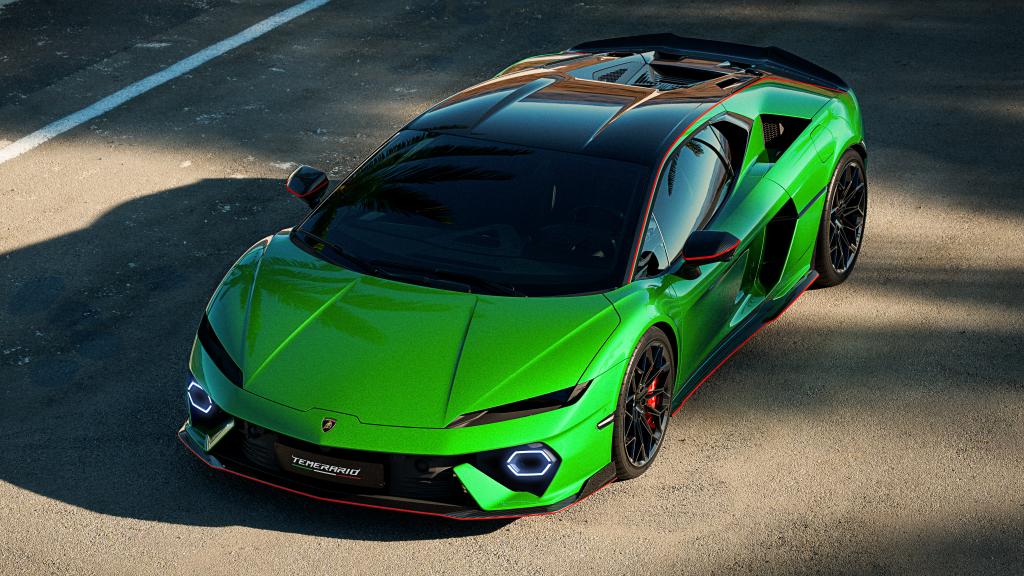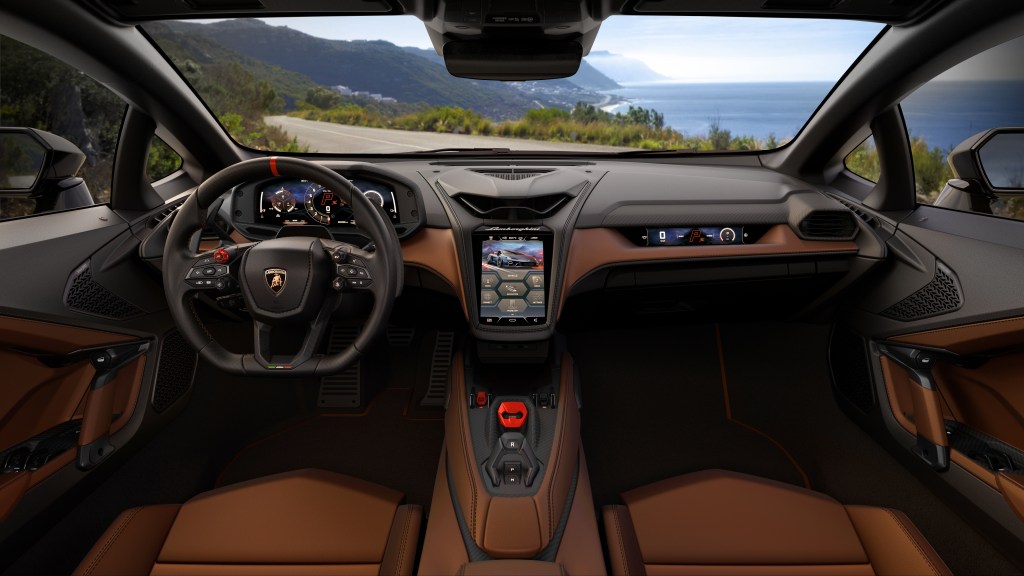Lamborghini considered V6 and V10 engines for Temerario, before settling on V8 … and here’s why
Linear power delivery and continued acceleration right up to the 10,000rpm red line
Lamborghini held an internal “competition” to decide what kind of powerplant would form the basis of the new Temerario, before settling on an all-new turbocharged and hybridised V8 engine, according to its chief technical officer and head of R&D.
At a launch event for the Huracan replacement in London, Rouven Mohr said a number of different solutions were considered for the new car, including retaining the Hurcan’s lauded and much-loved naturally-aspirated V10 engine.
“When we started the concept of this car [Temerario], I can tell you that, for sure, in the last years, the segment of the Huracan, the power requests were increased dramatically. So especially the last four or five years, we have to admit that the V10 with the 640 horsepower output was not anymore on the state of the performance of the art of the segment.”

Mohr (pictured above) said those “requests” came from both customers but also internal performance targets, hinting that rival carmakers had launched models that outgun the Huracan.
“As a manufacturer, you always have to listen to your customers but also you have your own vision where you want to position yourself,” he said. “And it’s clear that in the past, we lost a little bit, let me say, or we risk to lose the train if we are not doing something. Therefore, we were evaluating completely open in a kind of concept competition internally which engine we want to do.”
Along with the V8 that was eventually selected, Lamborghini also looked at twin-turbocharged V6 power units, similar to the configuration used in Formula One, along with an all-new V10. Updating the Huracan’s V10 was dismissed in early discussions due to the fact that the changes required so that it meets emissions regulations would have resulted in unsatisfactory power outputs.
However, an all-new V10 was also dropped, Mohr said, because to hit the targeted power outputs would have required either a larger displacement or an engine that revs up to 12,000rpm. The former would have resulted in an engine with a character that was too close to that of Lamborghini’s 12-cylinder unit used in the range-topping Revuelto, while the latter is not practical for a super sports production car, according to Mohr.
When attention turned to a twin-turbocharged V6 engine — a configuration used by Ferrari in the 296 GTB and McLaren in the Artura — Lamborghini decided that dropping four cylinders was too much of a stepchange for its customers, and that a six-cylinder unit was not befitting its brand.




“The potential for emotion; that is very important for us,” said Mohr. “The V8 with the flat crankshaft has a higher potential than the V6. Therefore we say, ok, even if not needed for the performance, we decided to go for the V8 for the brand positioning and for the emotional side.”
A flat crankshaft — where the pistons are joined at crank at opposing position, in a 180-degree plane — was important to the feel of the engine, according to Mohr. Flat cranks are known for offering the opportunity for higher revs than a cross-plane engine, which attach pistons to the crank at 90-degree intervals, but also for increased vibrations through the car.
The resulting high-revving V8 produces its peak power of 789bhp at almost the very top of the rev range, between 9,000 and 9,750rpm. To achieve the Temerario’s total output of 907bhp, the engine is supplemented by twin turbochargers and three axial flux electric motors, with two on the front axle and a third at the crank, but Mohr said he wanted all the components to work together so that the car had the character of a naturally-aspirated engine under acceleration.
So, while the electric motors help create plenty of torque (twisting force) at low revs, for immediate “transient” responsiveness on and off the throttle, the turbos have been supersized in order to aid performance right up to the maximum revs.

“At the higher revs there is a power plateau [with Temerario],” explained Mohr. “It’s not if you have a natural aspirated one and you rev high; you achieve the maximum revs and then you have a drop of the power. If you have a turbo engine, have early boost … but if you then rev up after this boost, in the best case you have a constant boost but it’s not giving you something on top if you rev up. Therefore also it does not make fun to rev up a turbo engine.
“We have chosen a completely different character. We have huge turbochargers to provide enough boost at the high revs, because I can tell you if you want to have a four-litre engine rev to 10,000 you need a lot of air if you want to preserve the boost. We are actually increasing the boost at high revs, which is resulting then in this flat power curve. So it feels like the car is even exploding at high revs; it’s not ending the acceleration.
“You have the combination. You have linear, linear, linear power and then on top you have the boost. That is giving you a driving experience that I can guarantee you have never experienced before.”
The Lamborghini Temerario is on sale now via dealers, with first deliveries expected at the end of next year or early 2026. Prices will start at around £260,000 on the road.
Related articles
- If you were interested in why the Lamborghini Temerario features a V8 engine, you might like to hear from Stephan Winkelmann on why it will be the firm’s most comfortable supercar ever
- Also check out our Lamborghini Huracan Sterrato review: Let’s off-road… in a £230,000 supercar
- Did you know Lamborghini is going electric? Here’s its first EV, a four-door ultra-GT with over 1,300bhp
Latest articles
- Should I buy a diesel car in 2025?
- F1 2025 calendar and race reports: The new Formula One season as it happens
- Zeekr 7X AWD 2025 review: A fast, spacious and high tech premium SUV — but someone call the chassis chief
- Denza Z9GT 2025 review: Flawed but sleek 1,062bhp shooting brake from BYD’s luxury arm
- Extended test: 2024 Renault Scenic E-Tech review
- Best-selling cars 2025: The UK’s ten most popular models of the year so far
- Audi A6 Avant 2025 review: Trusty executive estate ticks expected boxes, and there’s still a diesel option
- Keir Starmer eases pressure on carmakers to sell EVs in response to ‘global economic headwinds’
- Ferrari 12Cilindri Spider review: Heady blend of traditional and futuristic becomes even more intoxicating after lid is removed














